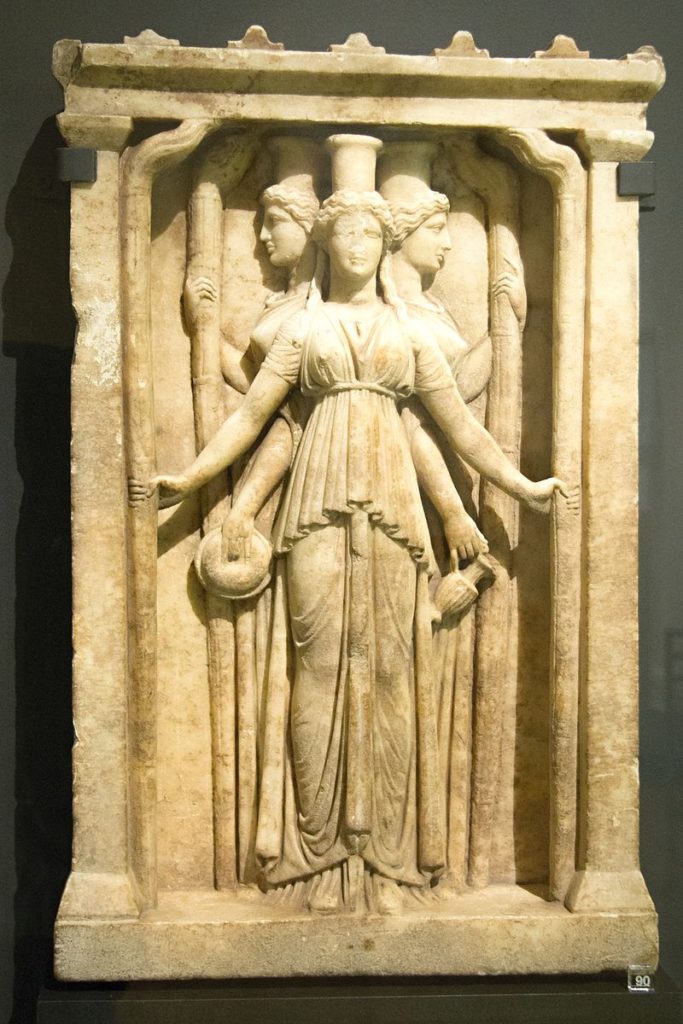Hello all! It’s been awhile! I am still working on the ancient greek version of We Shall Overcome, but in the meantime I had some other fun lyre stuff I thought I’d share. I think our activism needs to be continuing, but I also think that it’s okay to focus on frivolous things too at times. So in the spirit of frivolity, here is a video of my incredibly talented kitty Willow playing one of my lyres.
As you can see, she is very skilled. Moving on, while I’m working on ‘We Shall Overcome’, I thought I would do a brief intro/ how to on a Peplos. For my final performance I hastily constructed a Peplos-esque garment, but I thought it was time to really work on my Sappho costume.
Full discoslure: I can only claim to be an expert on my cat, and ancient greek clothing is not something I have studied before. I used Mirelle M. Lee’s Body, Dress, and Identity in Ancient Greece (Cambridge: Cambridge University Press, 2015) as my main/ only scholarly source for this brief investigation. Lee makes the point that to properly study ancient greek clothing, it is important to understand the wider cultural context.1 Mirelle M. Lee, Body, Dress, and Identity in Ancient Greece, (Cambridge: Cambridge University press, 2015) 89. I agree, though as I have only just started this research aspect of my recreation, I have somewhat done that with my Peplos re-creation, as I still have way more to learn.
The Peplos (ὁ Πέπλος) is an ancient greek garment, and seems to be one of the first common dress styles seen in ancient Greece, which makes it likely that Sappho would have worn it, or something similar. 2 Mirelle M. Lee, Body, Dress, and Identity in Ancient Greece (Cambridge: Cambridge University Press, 2015) 100. Though it is important to remember, that just like theory on ancient Greek music, a lot of the surviving records survive from iconography from vase paintings, and sculptures, and art does not necessarily reflect reality. 3 Lee, Body, Dress, and Identity in Ancient Greece (Cambridge: Cambridge University press, 2015) 89 Like with my lyres (and certainly with my singing) 100% historical accuracy is not possible, nor is the goal. Keeping this in mind, a peplos was a garment worn by both men and women, and is seen in a lot of ancient greek art. One of the most famous archaic statues, the Peplos Kore, is identified with the garment (somewhat obviously).4 For more on this, please consult the University of Cambridge’s page on her So, working with the idea that our best guess of what Sappho would have worn would be a Peplos, what is a peplos?
Broadly speaking, a peplos is a large rectangular piece of cloth, folded over and pinned/ secured at the wearer’s shoulders, so that one side of this cloth is left open. Here’s a quick diagram I drew to better conceptualize it:

And here’s a more in-depth video going through how to fashion your own peplos. All you need is a belt of some sort, a large rectangular piece of cloth (here I used a bed sheet, but I have also used a more circular but less accurate table cloth), and two pins.
Here are some other peplos attempts I’ve done:

Peplos Fashion I 
Peplos Fashion II 
Peplos Fashion III
And here are some other examples of (actual) Ancient Greek Peploses (Peploi?):

The Famous Peplos Kore 
A re-creation of what the Peplos Kore looked like before her paint faded 
Statue of unknown woman wearing a peplos (and not her head) 
Statue of Artemis wearing a Peplos (as well as a chiton and himation) 
Relief of triple Hecate, wearing a peplos and chiton
I still have a lot more to learn about ancient greek clothing, and costuming, but so far I’ve enjoyed the process, I hope others will too. Until next time!
